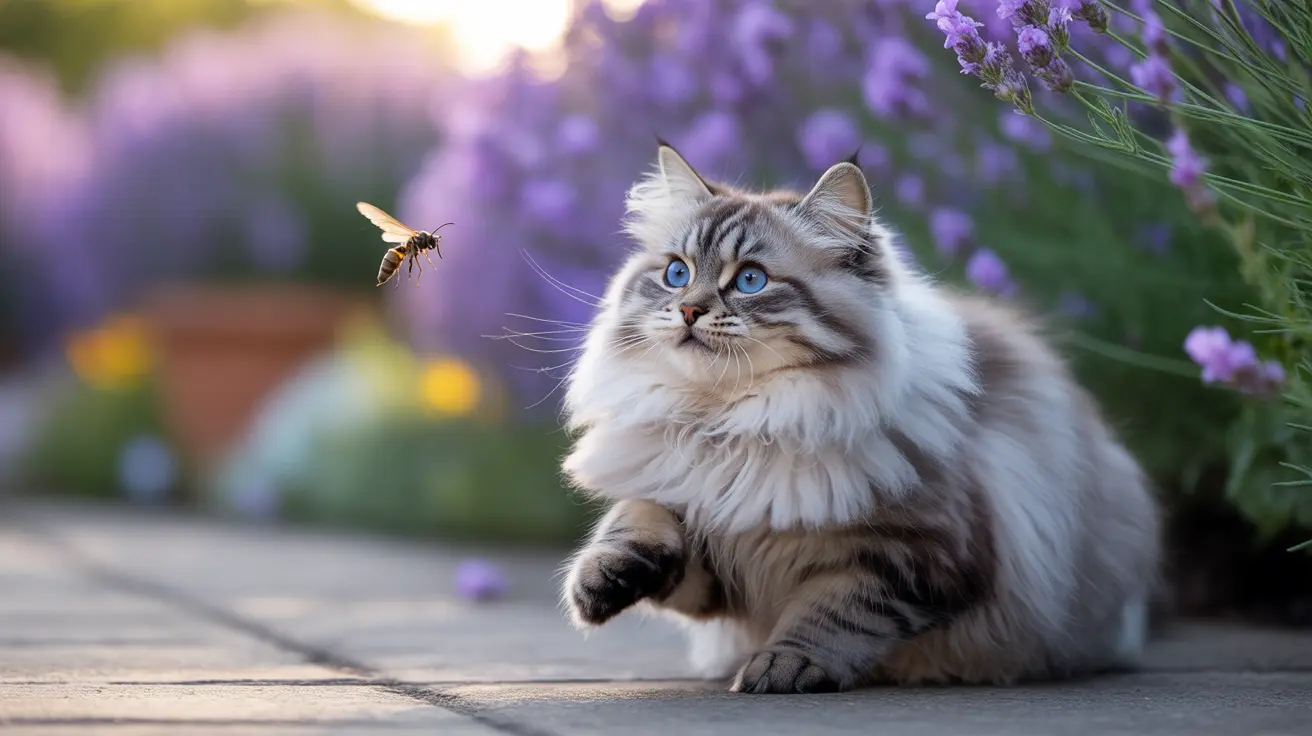The Truth About Cats Eating Wasps
When a cat manages to catch and eat a wasp, the outcome largely depends on whether the insect stings during the encounter. If the wasp is already dead or quickly subdued, your cat may experience no adverse effects. This is because wasp venom is primarily dangerous when injected through a sting rather than when digested.
However, the act of catching and eating a wasp presents significant risks, as wasps can sting multiple times before being incapacitated. Unlike bees, which lose their stinger after one use, wasps retain their ability to sting repeatedly, increasing the danger to your curious feline.
Potential Dangers and Health Risks
Stings and Their Location
The most serious concern when cats encounter wasps is the location of potential stings. Stings commonly occur on:
- Face and nose
- Paws
- Inside the mouth or throat
- Around the eyes
Stings inside the mouth or throat are particularly dangerous, as swelling in these areas can quickly compromise breathing and require immediate emergency care.
Allergic Reactions and Symptoms
Just like humans, cats can experience allergic reactions to wasp stings. Common symptoms include:
- Localized swelling and pain
- Excessive drooling
- Difficulty breathing
- Vomiting or diarrhea
- Lethargy or weakness
- In severe cases, anaphylactic shock
Immediate Care and Treatment
If you suspect your cat has eaten a wasp or been stung, take these immediate steps:
- Remain calm and observe your cat closely
- Check for signs of stinging or allergic reaction
- Apply a cold compress to any visible sting sites
- Contact your veterinarian if you notice concerning symptoms
Never attempt to administer human antihistamines or other medications without veterinary guidance, as these can be dangerous for cats.
Prevention Tips
The best way to protect your cat from wasp-related incidents is through prevention:
- Keep windows screened
- Remove or secure wasp-attracting foods and drinks
- Consider keeping cats indoors during peak wasp season
- Provide alternative entertainment to discourage insect chasing
- Regular inspection and removal of wasp nests around your property
When to Seek Emergency Care
Don't hesitate to seek immediate veterinary care if your cat shows any of these signs:
- Significant swelling, especially around the face or throat
- Breathing difficulties
- Severe lethargy or collapse
- Multiple stings
- Signs of allergic reaction
Frequently Asked Questions
Can cats safely eat wasps without being stung or harmed?
While cats can technically digest wasps, it's not safe to allow them to eat these insects. The risk of being stung, particularly in the mouth or throat, makes this behavior dangerous and potentially life-threatening.
What are the symptoms that indicate a cat has been stung by a wasp?
Key symptoms include swelling at the sting site, pawing at the face or mouth, drooling, difficulty breathing, vomiting, and lethargy. Severe reactions may include collapse or anaphylactic shock.
How should I provide first aid if my cat is stung by a wasp?
Apply a cold compress to the sting site, monitor your cat closely, and contact your veterinarian for guidance. Never give human medications without veterinary approval.
When is it necessary to take my cat to the vet after a wasp sting?
Seek immediate veterinary care if there are stings near the mouth or throat, multiple stings, signs of allergic reaction, or if your cat shows difficulty breathing or severe lethargy.
What are effective ways to prevent my cat from chasing or getting stung by wasps?
Use window screens, keep cats indoors during peak wasp activity, remove wasp attractants from your property, and provide engaging toys to distract from insect chasing.






